How to Decide Between THT and Inkjet for Industrial Labeling
When it comes to industrial labeling, success hinges on selecting the printing technology that aligns closely with the jobs to be done. Thermal heat transfer (THT) and inkjet printing technologies each offer specific strengths and ideal application scenarios. Take a look at how they work, where they excel and critical factors when deciding how they both can fit holistically into your industrial labeling initiatives.
A closer look at the technologies

THT label printers
THT printers utilize a specialized ribbon containing a precise layer of meltable wax or resin. During printing, the heated printhead presses against this ribbon, melting the selected areas and transferring them directly onto the label surface.
The THT difference
- Ultimate durability: THT labels exhibit exceptional resistance to abrasion, fading, moisture, solvents, harsh chemicals and extreme temperatures (both high and low), and are often durable for up to 10 years or more. This makes them the superior choice for harsh indoor and outdoor environments.
- Label material adaptability: The wide selection of THT-compatible materials (paper, polyester, polyimide and more) allows more precise tailoring of label performance to specific applications.
- A few common applications: Asset tagging, GHS and HazCom labels requiring strict adherence to durability standards, long-lasting pipe marking, fade-resistant outdoor cable identification, cryogenic labeling and much more.
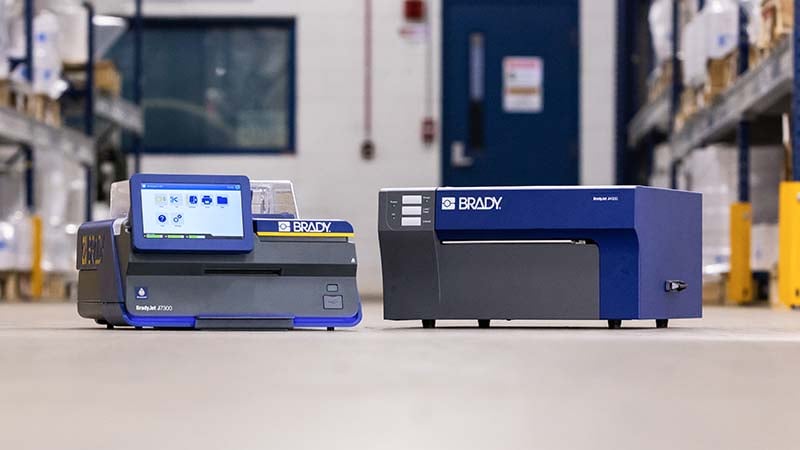
Inkjet label printers
Inkjet technology involves a seemingly simple yet precise process. Tiny ink droplets, as small as 100 microns wide (thinner than a human hair), are meticulously sprayed from the printhead onto the label surface without any direct contact by the printhead. This enables the printing of high-quality images and text.
The inkjet difference
- Unmatched visual quality: Industrial inkjet printers are capable of reproducing full-color images, complex graphics, intricate logos and photographs with stunning accuracy and speed.
- Rapid production for a variety of labels: Unlike thermal transfer printers that require matching ribbons and labels to the desired colors, inkjet printers operate using only white label material. This allows you to quickly print a wide variety of labels with different colors and designs without time-consuming setups.
- A few common applications: Product labeling demanding high visual impact, lockout tagout and safety identification featuring full-color photos, GHS labels with color-coded pictograms, attention-grabbing shelf labels, detailed facility signage and custom label designs.
More information on comparing the technologies
- Color labeling solutions: thermal transfer vs. industrial inkjet infographic (PDF)
- A guide to understanding different printer types: thermal, inkjet and laser
Drive your decision-making using the 4 C's
To unlock your ideal solution, evaluate the color, conditions, connection and content needs of your labeling.
Color
Key question to ask yourself: Will the labels primarily contain basic text, barcodes and single color, or graphics, photos and labels?
- THT: Ideal for single-color printing and printing to labels with preprinted headers. Achieving multiple colors requires the use of multiple ribbons and materials, adding complexity to the workflow.
- Inkjet: Allows easy access to the full color spectrum for detailed graphics, photo-quality elements and accurate color consistency.
Conditions
Key question to ask yourself: What degree of abrasion, chemical contact, sunlight intensity, temperature fluctuations, or moisture must the labels withstand on a daily basis?
- THT: The undisputed leader in durability, THT labels withstand chemical spills, rough handling, fading, and harsh outdoor weather conditions for exceptional lifespan.
- Inkjet: Offers reliable performance and up to two-year durability outdoors (even longer indoors).
Connection
Key question to ask yourself: How will my label designs be created and managed and where will the label data come from?
- THT: Versatile for both standalone printing where users create and print right on the printer and PC- or mobile-connected setups accommodating design adjustments and data integration.
- Inkjet: Relies on a computer connection for label design flexibility, making it well-suited for scenarios with frequent content modifications, graphics or variable data integration.
Content
Key question to ask yourself: How often will the labels be printed (high-volume or low-volume runs), and will the design and content remain static or change frequently?
- THT: Excels at static content like barcodes, basic text and printing to pre-formatted label layouts.
- Inkjet: Ideal for high-impact labels where data, designs, logos and photos are priorities and change frequently.
Find your ideal industrial label printer with Brady
Choosing the right industrial printer is an investment in your operation's efficiency, accuracy and adaptability. Brady’s comprehensive lineup of THT and inkjet printers helps you conquer the specific labeling challenges you face. Get reliability, intuitive operation, easy setup and unmatched label durability no matter which printer you choose and get every label job done right.
Inkjet printers – make it clear with color
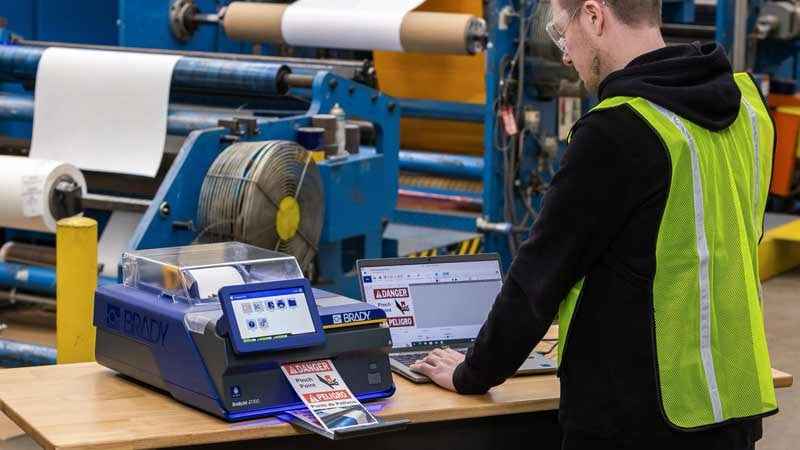
J7300 Color Label Printer
Unleash your true colors with Brady’s most advanced inkjet printer yet. It makes full-color printing for changing labeling needs easy with automatic label setup, easy operation, intuitive label creation and complete label durability.
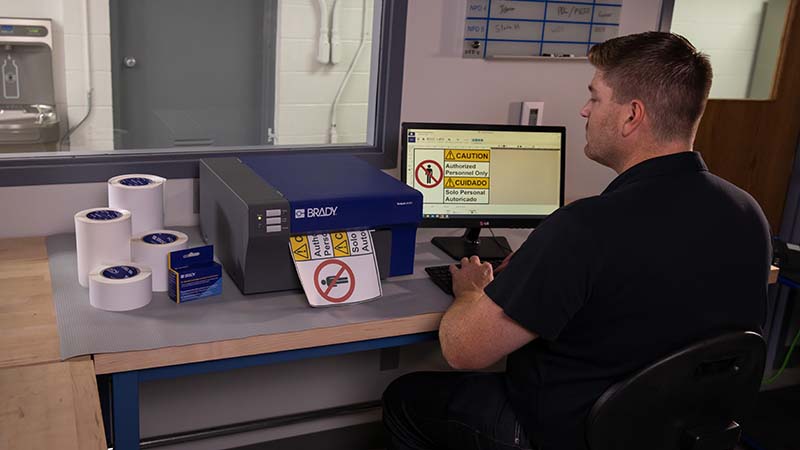
J4000 Color Label Printer
For larger full-color labeling and signage up to 8 inches wide, the J4000 printer offers the ease of use and label options you need.
THT printers – make it last with thermal transfer
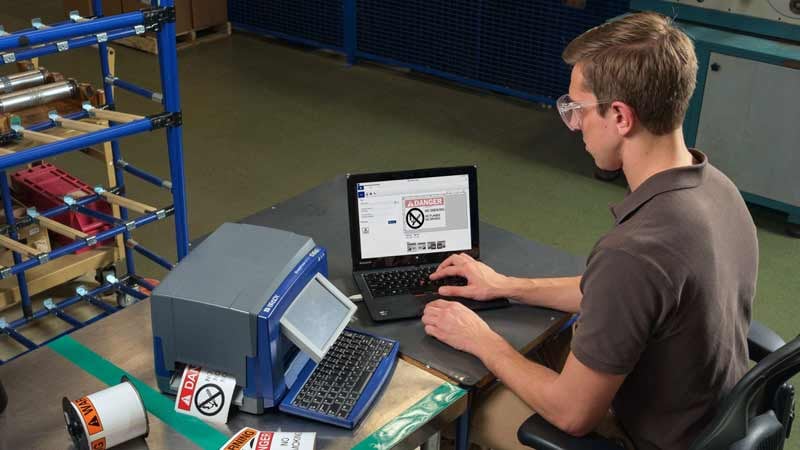
S3100 Sign and Label Printer
For simple, single-color printing up to 4.25" wide, the S3100 is an easy choice. It’s ideal for multi-user areas or locations tight on space or security with no PC access.
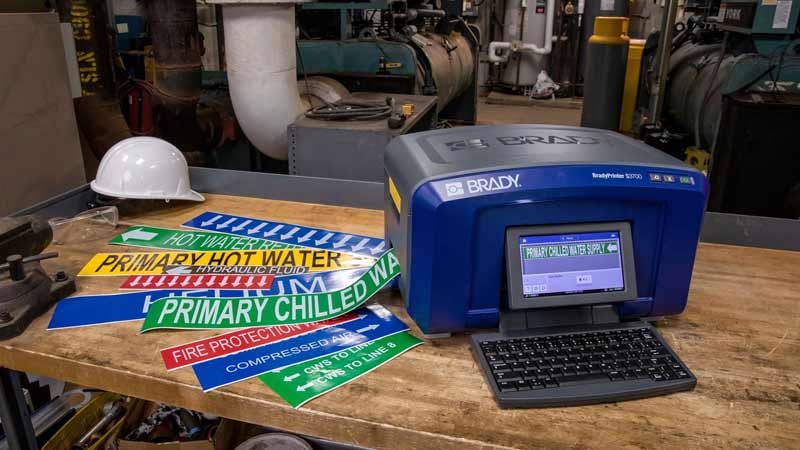
S3700 Sign and Label Printer
Combining bold multicolor and precision shape cutting, the S3700 is optimized to print a wide variety of labels 0.5 to 4" wide.
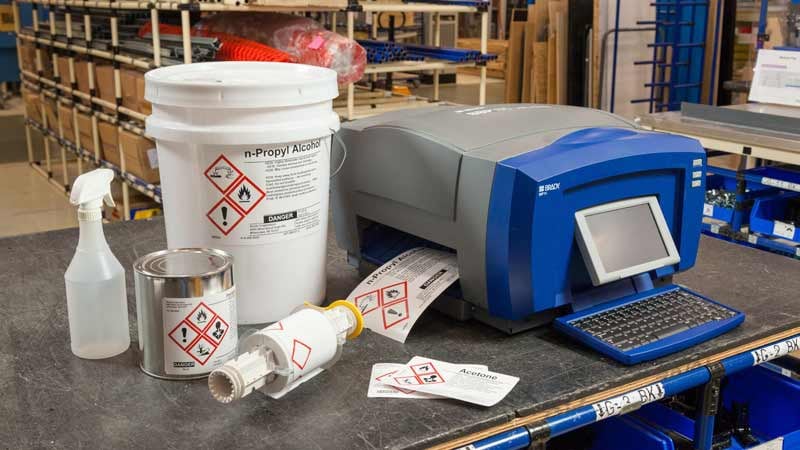
BBP®85 Sign and Label Printer
The optimized 10” wide format and multicolor capabilities of the BBP85 gives users the tools to create labels and signs that make a big impact.
For maximum labeling versatility, consider a combination of THT and inkjet printers. This strategy empowers you to tackle the full spectrum of labeling needs, from long-term durability to photo and graphics printing. Contact a Brady representative to craft the ideal printer solution for your facility.
